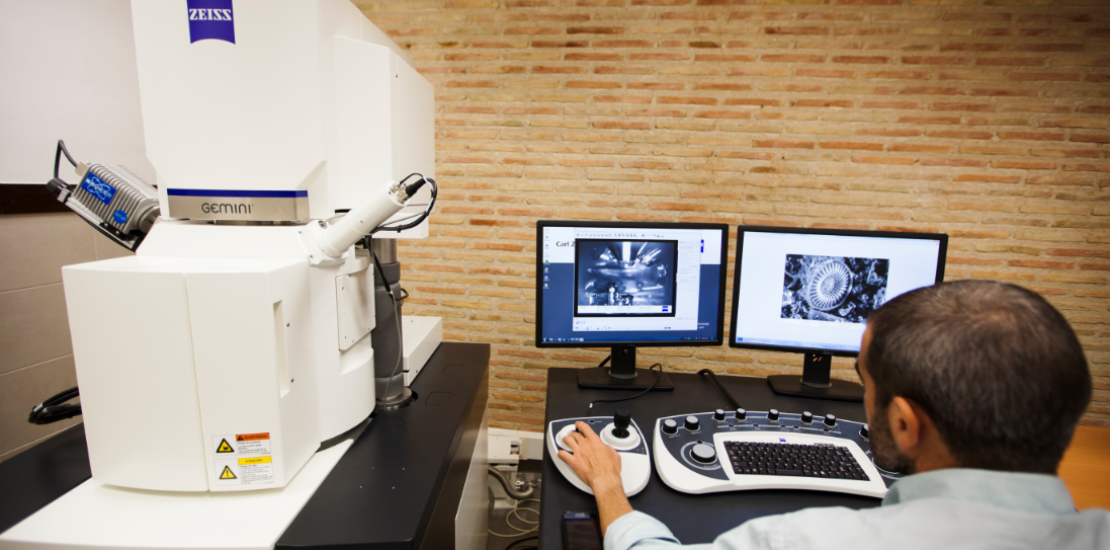Scanning Electron microscope allows research progress in criminology, food science and engineering
This new microscope is able to identify particles of linen, aloe, myrrh, pollen, epithelial and red blood cells in the historic Shroud of Oviedo.
The Catholic University of Murcia continues its strong commitment to research using, among other tools, the Scanning Electron Microscope (SEM) which they acquired last year.
Several UCAM departments are following the example of other universities, technological centers and research institutes, by using this new tool to carry out research in areas such as health, food sciences, architectures and criminology.
Currently UCAM is working with the SEM across varios areas of research, with particular focus on engineering, in order to acquire samples for a comparatives study of construction materials and of submarine samples.
In the fiel of medicine, this microscope is being used to acquire images os samples of nano-encapsulated peptides, for purposes of microanalysis.
Further investigations being carried out by the Catholic University of Murcia using this microscope include the study of human hair from archeological remains.
Teaching support
The electron microscope is also a tool to support teaching. An example of this is the seminar in Cell Biology in which UCAM´s Medicine students parcipated, where they were given the opportunity to inspect various organs of a rodent.
Similarly, there are various activities scheduled will be various scheduled throughout the new year for the use of this microscope, including the launch of the Cryo-SEM workstation, which will work with frozen samples.
First insights Into the `Shroud of Oviedo´.
Cells of linen, aloe, myrrh, pollen and epithelial and red blood cells were some of the samples found in the first analysis on the `Shroud of Oviedo´, thanks to the Scanning Electron Microscope.
The Chief of the Forensic Histopathology Section in the Murcia Institute of Legal Medicine, and director of the Research Team of the Spanish Centre for Sindonology (EDICES), Alfonso Sánchez Hermosilla, who is currently working with the SEM, stated that this new tool will not only help to considerably advance the investigation on the Shroud of Oviedo, but that "this experience will allow us in the future to even solve cases of crimes just by using textile or biological material recovered from the scene" he said.
The Vice-rector of research at the UCAM, Estrella Núñez stated that "within the strategic actions carried out by UCAM, the University has increased the number of its researchers, as this is one of the fundamental pillars on which the academic structure of the UCAM is founded".




